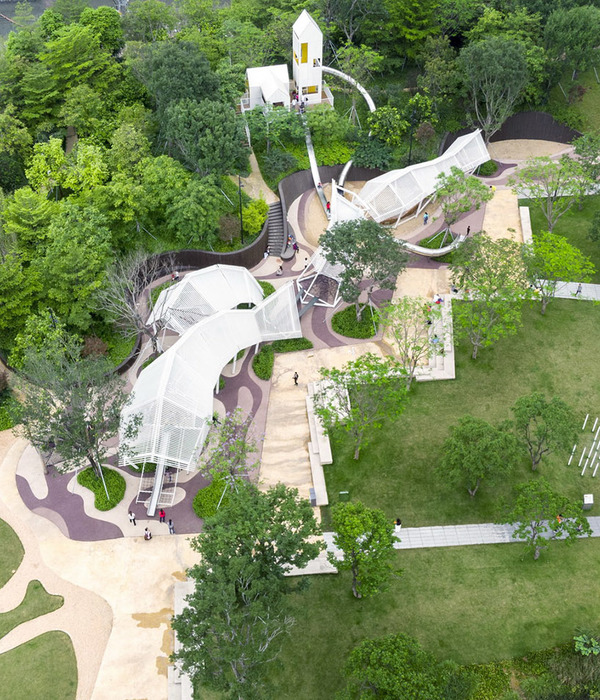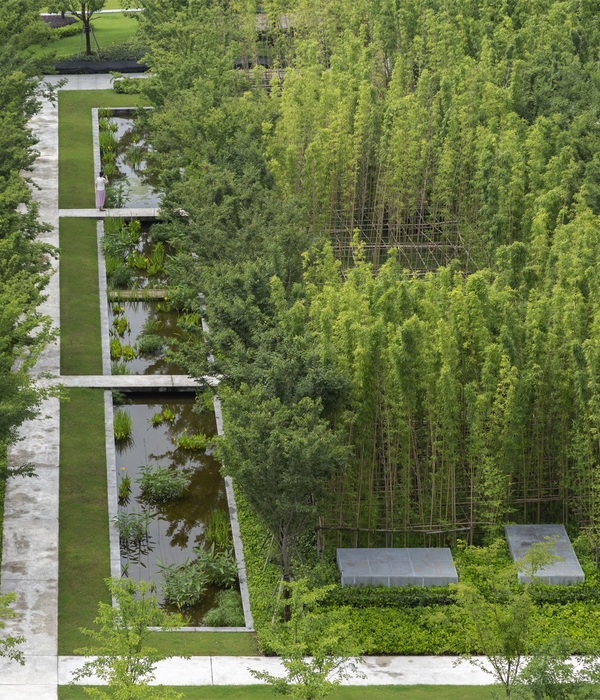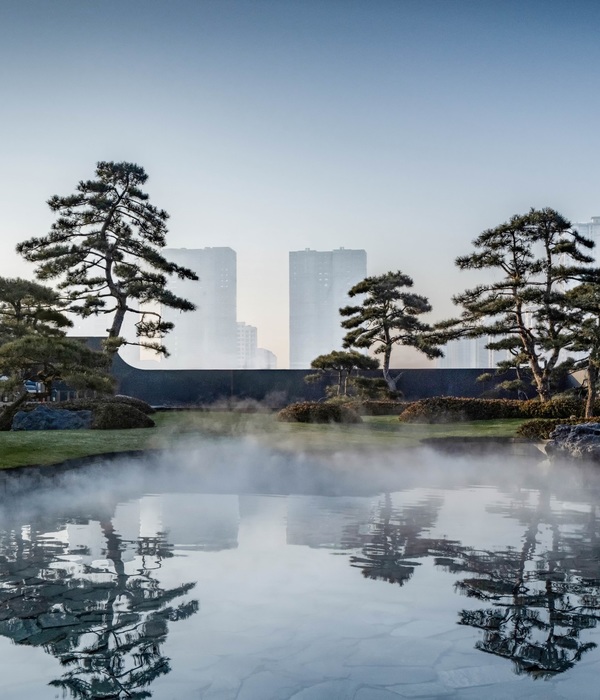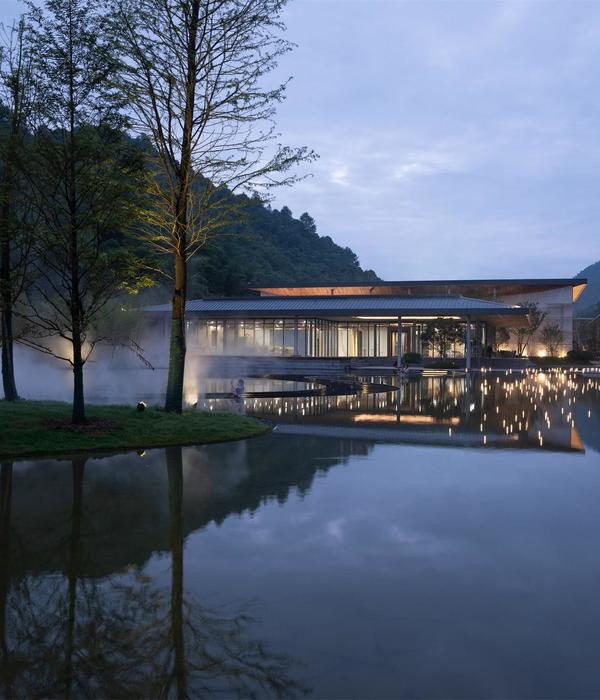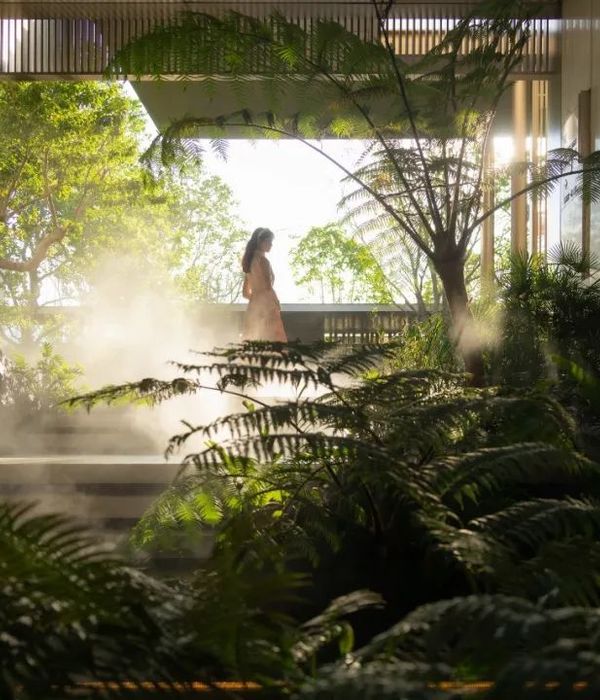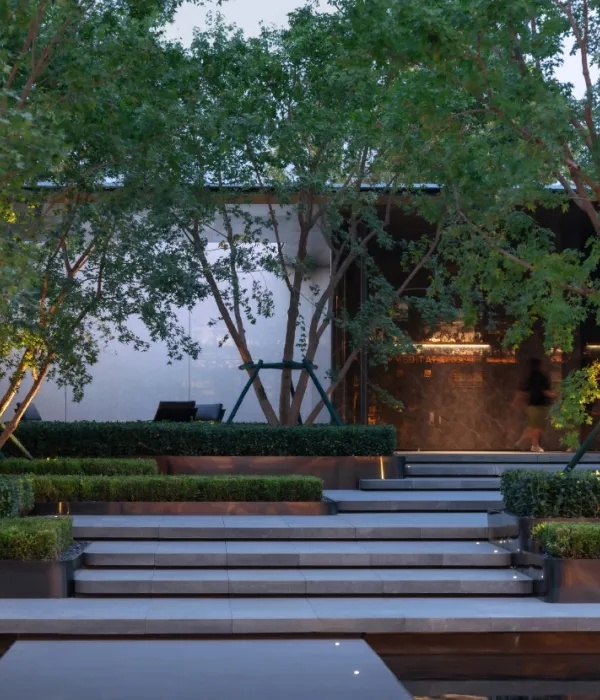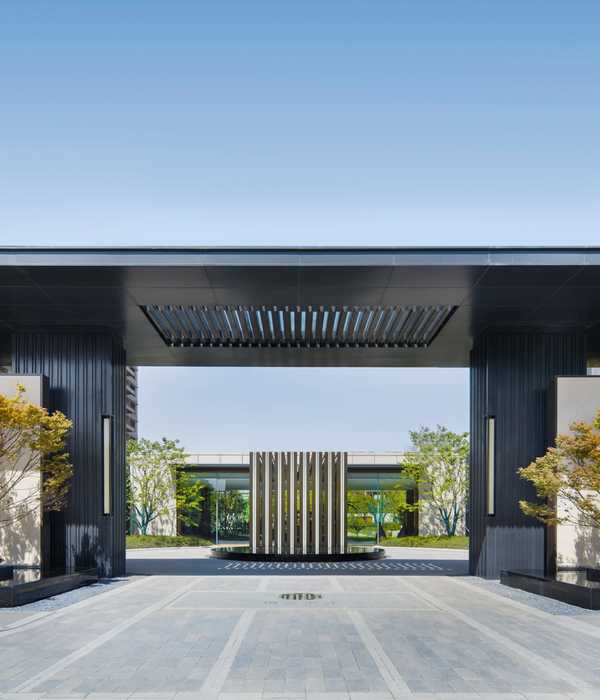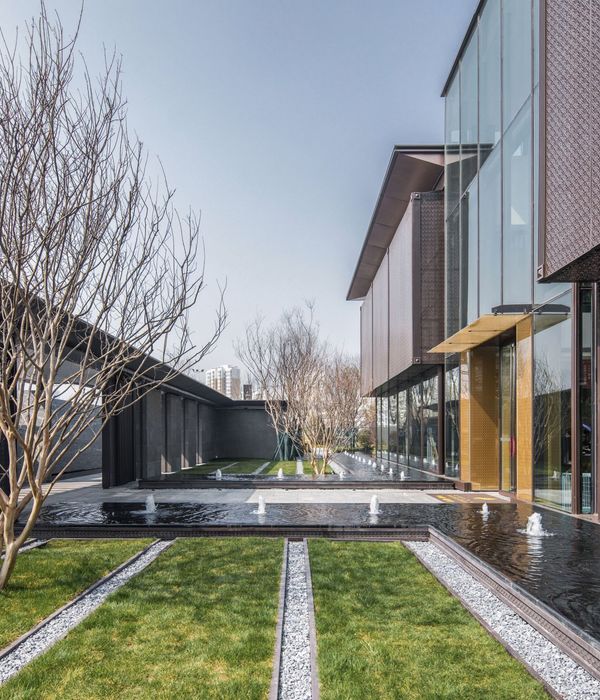这是有史以来的,第一次,中国乡村振兴项目荣获IFLA国际大奖。
项目概要 | Project statement
基地位于四川省德阳市,是一个郊区的小村庄。在国家全面实施乡村振兴的战略下,高槐村进行了一次乡振改造,但由于缺乏深入性研究,后期发展疲软,逐渐又走向了没落。我们接受了这艰巨的挑战,在资金少,原生环境已遭破坏,村民失去信任等不利情况下,通过修复生态系统,改善人文环境,强化在地性记忆与情感,推动“村民共建”,真正实现高槐村的活力复苏。
▼总平图,site plan
The base is a small village in the suburb located in Deyang, Sichuan Province. Under the strategy of rural vitalization, Gaohuai carried out a township reform. However, due to the lack of in-depth research, the late development was weak and gradually went down. We decided to accept this daunting challenge after the local government found us. Facing the obstruct of unfavorable circumstances of low capital, the destruction of the original environment and the loss of trust of the villagers, we planned to repair the ecosystem, improve the human environment, strengthen local memory and emotions, and promote “villager co-construction”. Gaohuai will be revitalized in the true sense and we call it “the Second Revival of Gaohuai Village”.
▼高槐区位图,location & data of Gaohuai
高槐村现状 | Gaohuai Village Status
a.首次乡振改造缺乏深度调研分析,一味迎合城市节奏,反而弱化了生态优势,没有形成有效的区域吸引力,乡村再次呈现出衰落状态;
b.村落河道、水道及其周边环境遭到破坏,垃圾污染严重,影响村民农业耕作,同时引发洪涝灾害;
c.首次乡振改造引入外来物种,侵害本地植物的生存空间,植被出现不同程度的退化;
d.首次乡振引入的咖啡产业单一,无法满足多元化需求,缺乏对客群的吸引力;
e.首次乡振忽视了村民精神文明建设,依然存在城乡文化隔阂。
a. Lack of in-depth research and analysis on the first progress of rural vitalization, blindly catering to the urban rhythm instead of emphasizing its own ecological advantage, failing on forming an effective regional attraction and the current status of decline;
b. The village river, water channels and its surrounding environment have been damaged and seriously polluted, affecting the agricultural farming of the villagers and causing flood disasters;
c. Introducing exotic species at the first time of rural vitalization leaded to infringe on the living space of local plants and the local plants were decayed in different degrees;
d. Coffee industry, introduced at the first rural vitalization, is too single to meet diversified needs and it lacks attractiveness to the customer base;
e. After the first rural vitalization, cultural barriers between village and city still remains.
策略 | Strategy
恢复水生态系统
:梳理汇水路径,利用重力做功,通过沟、塘、泊等自然方式分洪治涝、蓄集、净化水系,结合竖向设计搭建多级台地,形成“水泊沟回”生态景观水系。同时,规划污水处理系统,解决后期多业态的排污处理需求。
Restoration of aquatic ecosystems
: Combining the water supply path and letting the gravity to do work, we plan to divide and cure floods, collect and purify the water system through natural methods such as ditch, pond and mooring, and combine the vertical design to build multi-level platform to form the “Circuitous Flow” ecological landscape water system. Meanwhile, the sewage treatment system is planned to solve the demand for sewage disposal in the later stage.
▼恢复水生态系统,restoration of aquatic ecosystems
建立原生植物系统
:研究分析本土植物,选出用于景观打造的植物品种,建立试验田对其进行交叉搭配种植试验,通过一段时间的自然生长与竞争,筛选出具有优势的原生植物品种,形成科学的理论数据。在高槐村的植物设计中,合理利用当地优势品种,以保证长期的景观效果,同时降低后期维护成本。
Establishment of native plant system
: We did researches and analyze the native plants species and select proper species for landscape construction. Then we established experimental fields for cross-matching planting experiments. Through a period of natural growth and competition, we screened out the dominant native plant varieties and collected scientific theoretical data. In the plant design of Gaohuai Village, the rational use of local dominant varieties ensures long-term landscape effects and also reduces post-maintenance costs.
▼建立原生植物系统,establishment of native plant system
以生态方式推动精神文明建设,引导村民共建
:我们修缮村落集会广场、规整街道,打造生态宜居的乡村环境,焕新风貌。我们革新性引入微生物分解垃圾的技术,无需高压工厂、大型场地及重工型设施设备,简单高效地指导村民及产业经营者自主利用微生物发酵降解处理餐厨等生活垃圾,减少环境污染,该工艺实现了4小时内完全分解餐厨垃圾并减量80%,同时不会产生二次污染,处理转化生产出高品质菌肥可用于农业耕作,改良土壤,形成资源化循环,解决国家沃土计划中遇到的一产痛点问题,实现村民增收。在景观节点的设计上,多选取村民熟悉的当地材料,节约资源,保持生态朴风,同时提供多个基础岗位,增加村民就业率,实现共建。生态建设带来的就业增收调动起村民的积极参与性,大家各施所长,以“传统手工艺、农家味道、绿色果蔬”等形式献力乡村建设。
Promoting the construction of spiritual civilization by means of ecology and guiding the villagers to build together
: We repaired the village gathering squares and regulated the streets to create an ecologically livable rural environment and revitalize the landscape. We introduced the technology of microbial decomposition of waste for the first time. It does not require high-pressure and high-temperature plants, large-scale sites, and heavy-duty facilities. It simply and efficiently guides villagers and industrial operators to use microbial fermentation to degrade kitchen waste and other domestic wastes and reduce environmental pollution. The process can be completed in 4 hours and reduced 80% quality without causing secondary pollution and the high-quality bacterial fertilizer can be used for agricultural farming, improving soil, forming a resource recycling cycle, solving the difficult problem of the “national fertile soil” strategy, and finally increasing villagers’ income. In the design of the landscape node, local materials that the villagers are familiar with were selected as more as possible to save resources and maintain ecological simplicity. At the same time, multiple basic posts are provided to increase the employment rate of the villagers, and achieve joint construction. The increase of employment brought by the ecological construction has mobilized the active participation of the villagers. Everyone has given their strengths to contribute to rural construction in the form of “traditional crafts, farmhouse taste, green fruits and vegetables”.
▼本地植物类别,catalogue of local plants
▼生态规划,ecology development plan
布局产业生态闭环
:根据分析市场需求,结合高槐村自身的特色优势,在现有的咖啡业态基础上,引入共享农场、餐饮、文创、教育、民宿等多元化闭合业态,补充消费者在高槐吃、住、游、学等多方位乡村体验需求,促进村民与游客的良性互动,形成商业价值相互支撑,打造“众创、共建、共享、共赢”的产业生态圈,全面推动高槐村的经济文化发展。
Building Ecological Loop of Industry
: According to the analysis of market demand, combined with the unique advantages of Gaohuai Village and on the basis of the existing coffee industry, we introduce the shared farms, catering, cultural creation, education, homestay and other diversified closed formats to supplement consumer’s Multi-faceted rural experience demand of eating, living, travel and learning, promote the benign interaction between villagers and tourists, form mutual support of business value, and create an industrial ecosystem of “innovation, joint construction, sharing, and win-win”, and comprehensively promote the development of economy and cultural in Gaohuai Village.
▼布局产业生态闭环,building ecological loop of industry
▼产业规划,business development plan
影响力 | Influence
二次激活高槐村是以生态振兴为基础,引导村民共建,利用有限资源,实现可持续发展,同时创造多元化业态空间,吸引资本与人才的“返乡”流动。该项目不仅有效地扭转了当地乡村再次衰落的形势,针对性解决了乡村振兴发展中的痛点、难点,也为解决普遍存在的共性问题提供了参考价值,具有现世的传播意义。
The second revival of Gaohuai Village is based on environment vitalization. With limited resource, we approached the goal of sustainable development. Meanwhile, we helped to create a diversified business to attract fund and people back to Gaohuai. Thus, the project not only effectively reverses the situation of the local village’s decline again and solves key problems in rural vitalization directly, but also provides a reference value for common problems. It has a great significant meaning of establishing the new model of the world-art countryside.
▼景观效果图,landscape renderings
项目名称:2019 IFLA亚太地区分析规划类卓越奖:
二次激活——德阳市高槐村乡村振兴总体规划
设计方:环球地景设计有限公司
公司网站:
项目设计年份:2018年
主创:罗冰梅;
景观设计团队:陈彪、曲磊、吝丽、刁成龙
种植设计师:田春雷、廖阳
展陈设计师:熊峰、王雅、蒋正福
项目地址:四川省德阳市
项目面积:953212㎡
{{item.text_origin}}



